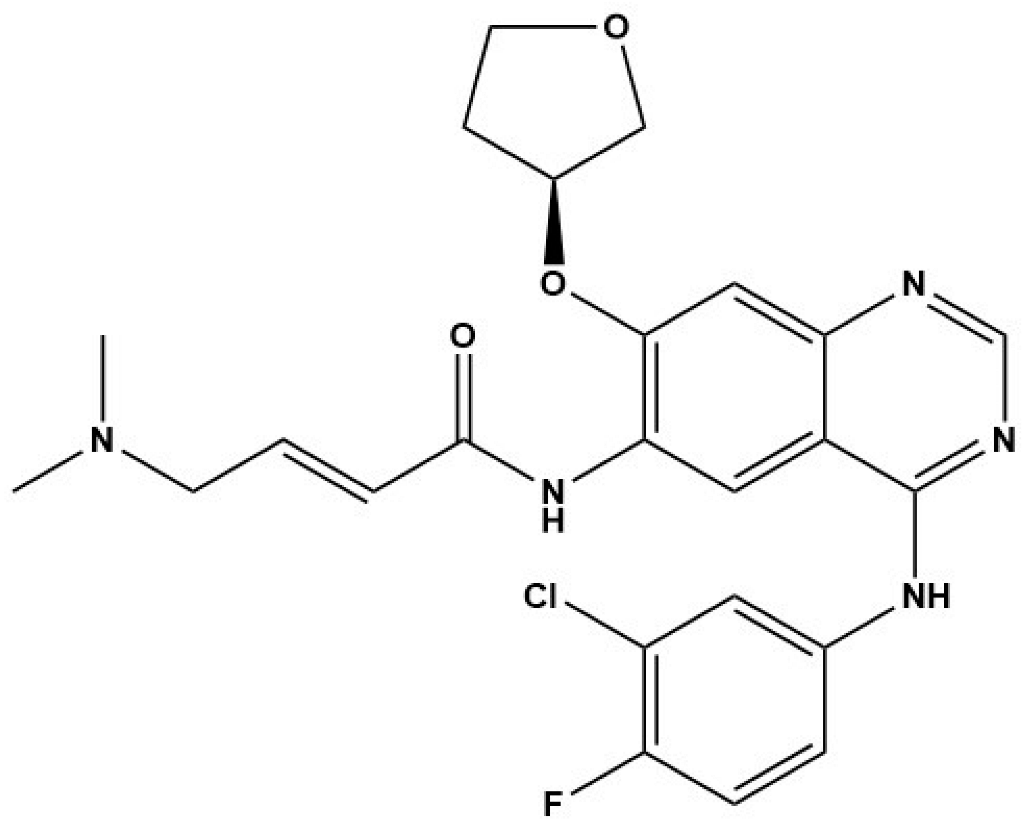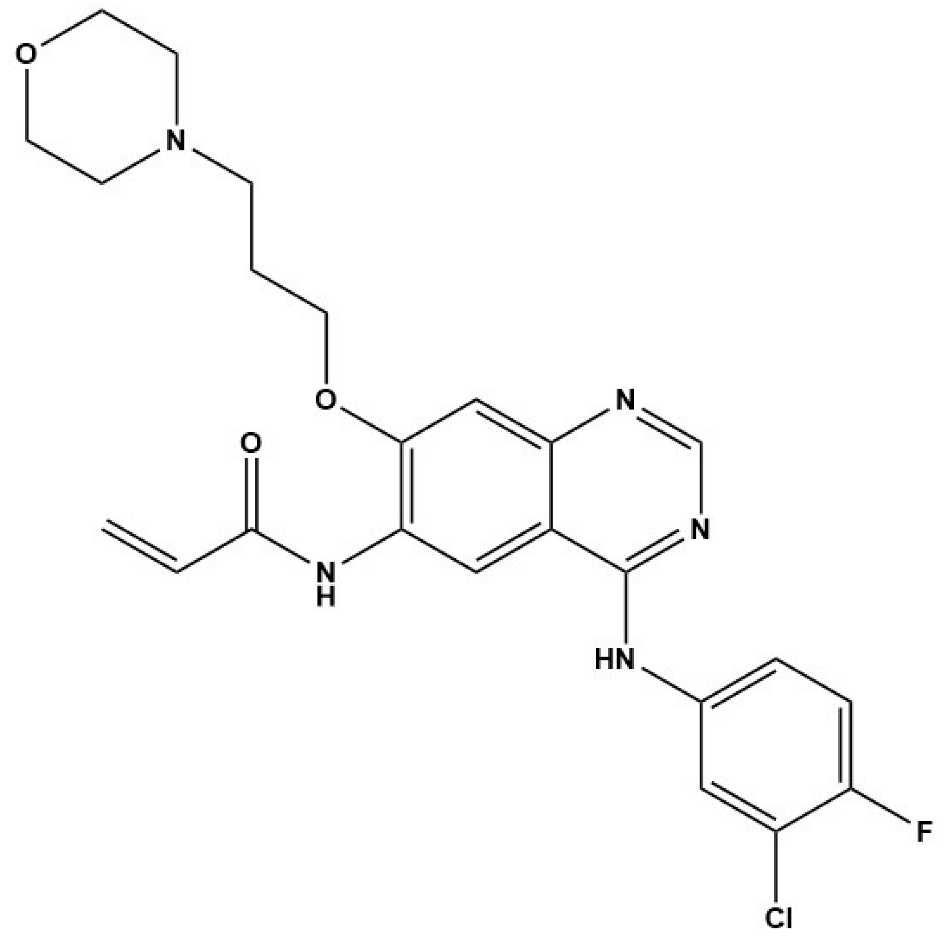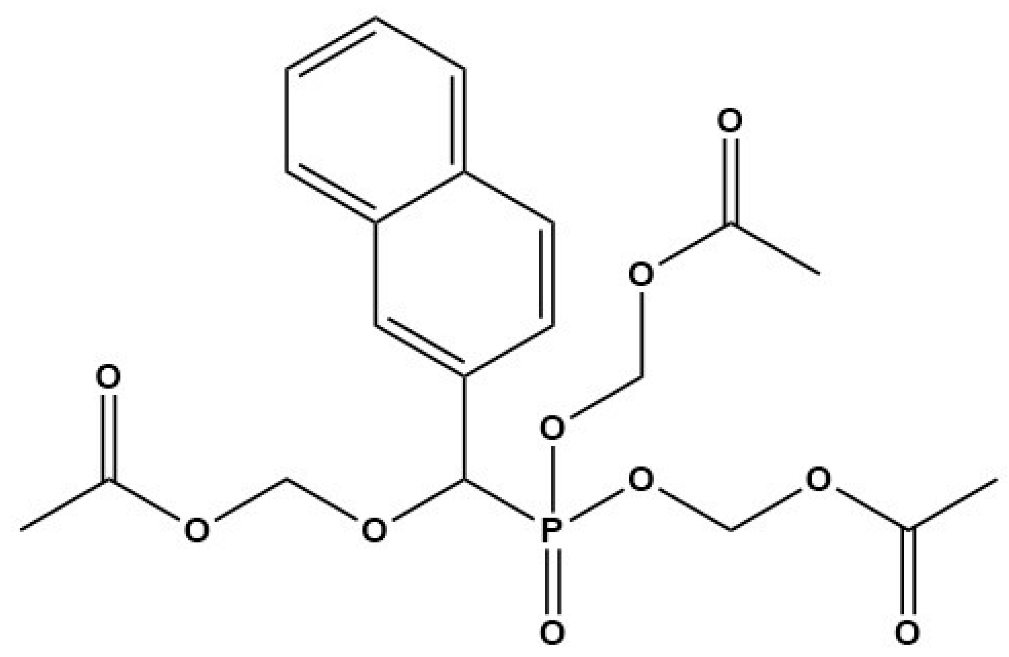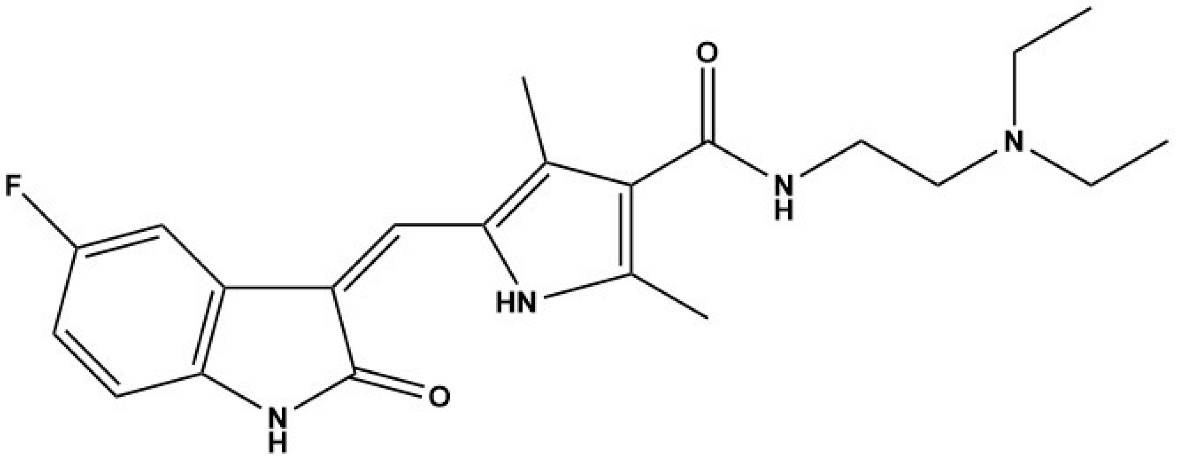Receptor Tyrosine Kinase Signaling Involves Echinococcus–Host Intercommunication: A Potential Therapeutic Target in Hepatic Echinococcosis
Abstract
:1. Introduction
2. RTK Signaling in Humans and Mammals
3. RTK Signaling Identification in E. granulosus and E. multilocularis
4. RTK Signaling Response in Echinococcus Infected Hosts
5. Activation of RTK Signaling Involves Echinococcus Metacestode Development
6. Targeting RTK Signaling Implies Potential Drug Target for Echinococcosis
7. Conclusions and Outlook
Author Contributions
Funding
Acknowledgments
Conflicts of Interest
Abbreviations
References
- Eckert, J.; Thompson, R.C. Historical aspects of echinococcosis. Adv. Parasitol. 2017, 95, 1–64. [Google Scholar] [PubMed]
- Knapp, J.; Gottstein, B.; Saarma, U.; Millon, L. Taxonomy, phylogeny and molecular epidemiology of Echinococcus multilocularis: From fundamental knowledge to health ecology. Vet. Parasitol. 2015, 213, 85–91. [Google Scholar] [CrossRef] [PubMed]
- Kern, P.; Menezes da Silva, A.; Akhan, O.; Mullhaupt, B.; Vizcaychipi, K.; Budke, C.; Vuitton, D.A. The Echinococcoses: Diagnosis, clinical management and burden of disease. Adv. Parasitol. 2017, 96, 259–369. [Google Scholar] [PubMed]
- Deplazes, P.; Rinaldi, L.; Alvarez Rojas, C.A.; Torgerson, P.R.; Harandi, M.F.; Romig, T.; Antolova, D.; Schurer, J.M.; Lahmar, S.; Cringoli, G.; et al. Global distribution of alveolar and cystic echinococcosis. Adv. Parasitol. 2017, 95, 315–493. [Google Scholar]
- Conraths, F.J.; Deplazes, P. Echinococcus multilocularis: Epidemiology, surveillance and state-of-the-art diagnostics from a veterinary public health perspective. Vet. Parasitol. 2015, 213, 149–161. [Google Scholar] [CrossRef] [PubMed]
- Deplazes, P.; Gottstein, B.; Junghanss, T. Alveolar and cystic echinococcosis in Europe: Old burdens and new challenges. Vet. Parasitol. 2015, 213, 73–75. [Google Scholar] [CrossRef]
- Cerda, J.R.; Buttke, D.E.; Ballweber, L.R. Echinococcus spp. Tapeworms in North America. Emerg. Infect. Dis. 2018, 24, 230–235. [Google Scholar] [CrossRef]
- Hui, L.; Ning, X.; Shi-Jie, Y.; Dong, W.; Jia, P. Epidemiological characteristics of canine Echinococcus infection in Qinghai-Tibet Plateau of China. Zhongguo Xue Xi Chong Bing Fang Zhi Za Zhi 2017, 29, 129–138. [Google Scholar]
- Aziz, A.; Zhang, W.; Li, J.; Loukas, A.; McManus, D.P.; Mulvenna, J. Proteomic characterisation of Echinococcus granulosus hydatid cyst fluid from sheep, cattle and humans. J. Proteom. 2011, 74, 1560–1572. [Google Scholar] [CrossRef]
- Swiderski, Z.; Miquel, J.; Azzouz-Maache, S.; Petavy, A.F. Echinococcus multilocularis (Cestoda, Cyclophyllidea, Taeniidae): Origin, differentiation and functional ultrastructure of the oncospheral tegument and hook region membrane. Parasitol. Res. 2018, 117, 783–791. [Google Scholar] [CrossRef]
- Thompson, R.C. Biology and systematics of Echinococcus. Adv. Parasitol. 2017, 95, 65–109. [Google Scholar] [PubMed]
- Urach Monteiro, D.; de Azevedo, M.I.; Weiblen, C.; Correia Ribeiro, T.; Emmanouilidis, J.; Tonin, A.A.; Botton, S.; Rue, M.L. Echinococcus granulosus sensu stricto, Echinococcus canadensis (G7), and Echinococcus ortleppi in fertile hydatid cysts isolated from cattle in Southern Brazil. Acta. Trop. 2016, 164, 41–44. [Google Scholar] [CrossRef] [PubMed]
- Romig, T.; Deplazes, P.; Jenkins, D.; Giraudoux, P.; Massolo, A.; Craig, P.S.; Wassermann, M.; Takahashi, K.; Rue, M. Ecology and life cycle patterns of Echinococcus Species. Adv. Parasitol. 2017, 95, 213–314. [Google Scholar] [PubMed]
- Craig, P.S.; Hegglin, D.; Lightowlers, M.W.; Torgerson, P.R.; Wang, Q. Echinococcosis: Control and prevention. Adv. Parasitol. 2017, 96, 55–158. [Google Scholar] [PubMed]
- Moro, P.; Schantz, P.M. Echinococcosis: A review. Int. J. Infect. Dis. 2009, 13, 125–133. [Google Scholar] [CrossRef] [PubMed]
- Stamatakos, M.; Sargedi, C.; Stefanaki, C.; Safioleas, C.; Matthaiopoulou, I.; Safioleas, M. Anthelminthic treatment: An adjuvant therapeutic strategy against Echinococcus granulosus. Parasitol. Int. 2009, 58, 115–120. [Google Scholar] [CrossRef] [PubMed]
- Hemphill, A.; Muller, J. Alveolar and cystic echinococcosis: Towards novel chemotherapeutical treatment options. J. Helminthol. 2009, 83, 99–111. [Google Scholar] [CrossRef] [PubMed]
- Steiger, U.; Cotting, J.; Reichen, J. Albendazole treatment of echinococcosis in humans: Effects on microsomal metabolism and drug tolerance. Clin. Pharmacol. Ther. 1990, 47, 347–353. [Google Scholar] [CrossRef] [PubMed]
- Maria, A.C.; Celina, E.M. Efficacy of albendazole in combination with thymol against Echinococcus multilocularis protoscoleces and metacestodes. Acta. Trop. 2014, 140, 61–67. [Google Scholar] [CrossRef]
- Hubbard, S.R.; Miller, W.T. Receptor tyrosine kinases: Mechanisms of activation and signaling. Curr. Opin. Cell. Biol. 2007, 19, 117–123. [Google Scholar] [CrossRef]
- Lemmon, M.A.; Schlessinger, J. Cell signaling by receptor tyrosine kinases. Cell 2010, 141, 1117–1134. [Google Scholar] [CrossRef] [PubMed]
- Sibilia, M.; Kroismayr, R.; Lichtenberger, B.M.; Natarajan, A.; Hecking, M.; Holcmann, M. The epidermal growth factor receptor: From development to tumorigenesis. Differentiation 2007, 75, 770–787. [Google Scholar] [CrossRef] [PubMed]
- Roviello, G.; Ravelli, A.; Polom, K.; Petrioli, R.; Marano, L.; Marrelli, D.; Roviello, F.; Generali, D. Apatinib: A novel receptor tyrosine kinase inhibitor for the treatment of gastric cancer. Cancer Lett. 2016, 372, 187–191. [Google Scholar] [CrossRef] [PubMed]
- Ebrahimi, N.; Fardi, E.; Ghaderi, H.; Palizdar, S.; Khorram, R.; Vafadar, R.; Ghanaatian, M.; Rezaei-Tazangi, F.; Baziyar, P.; Ahmadi, A.; et al. Receptor tyrosine kinase inhibitors in cancer. Cell Mol. Life Sci. 2023, 80, 104. [Google Scholar] [CrossRef]
- Gao, J.; Jian, J.; Jiang, Z.; Van Schepdael, A. Screening assays for tyrosine kinase inhibitors: A review. J. Pharm. Biomed. Anal. 2023, 223, 115166. [Google Scholar] [CrossRef]
- Du, X.; McManus, D.P.; Fogarty, C.E.; Jones, M.K.; You, H. Schistosoma mansoni fibroblast growth factor receptor A orchestrates multiple functions in Schistosome biology and in the host-parasite interplay. Front. Immunol. 2022, 13, 868077. [Google Scholar] [CrossRef]
- Pereira Moreira, B.; Weber, M.H.W.; Haeberlein, S.; Mokosch, A.S.; Spengler, B.; Grevelding, C.G.; Falcone, F.H. Drug repurposing and De Novo drug discovery of protein kinase inhibitors as new drugs against Schistosomiasis. Molecules 2022, 27, 1414. [Google Scholar] [CrossRef]
- Zheng, H.; Zhang, W.; Zhang, L.; Zhang, Z.; Li, J.; Lu, G.; Zhu, Y.; Wang, Y.; Huang, Y.; Liu, J.; et al. The genome of the hydatid tapeworm Echinococcus granulosus. Nat. Genet. 2013, 45, 1168–1175. [Google Scholar] [CrossRef]
- Brehm, K. The role of evolutionarily conserved signalling systems in Echinococcus multilocularis development and host-parasite interaction. Med. Microbiol. Immunol. 2010, 199, 247–259. [Google Scholar] [CrossRef]
- Brehm, K.; Koziol, U. Echinococcus-Host interactions at cellular and molecular levels. Adv. Parasitol. 2017, 95, 147–212. [Google Scholar]
- Hemer, S.; Konrad, C.; Spiliotis, M.; Koziol, U.; Schaack, D.; Förster, S.; Gelmedin, V.; Stadelmann, B.; Dandekar, T.; Hemphill, A.; et al. Host insulin stimulates Echinococcus multilocularis insulin signalling pathways and larval development. BMC Biol. 2014, 12, 5. [Google Scholar] [CrossRef] [PubMed]
- Förster, S.; Koziol, U.; Schäfer, T.; Duvoisin, R.; Cailliau, K.; Vanderstraete, M.; Dissous, C.; Brehm, K. The role of fibroblast growth factor signalling in Echinococcus multilocularis development and host-parasite interaction. PLoS Negl. Trop. Dis. 2019, 13, e0006959. [Google Scholar] [CrossRef]
- Cheng, Z.; Liu, F.; Li, X.; Dai, M.; Wu, J.; Guo, X.; Tian, H.; Heng, Z.; Lu, Y.; Chai, X.; et al. EGF-mediated EGFR/ERK signaling pathway promotes germinative cell proliferation in Echinococcus multilocularis that contributes to larval growth and development. PLoS Negl. Trop. Dis. 2017, 11, e0005418. [Google Scholar] [CrossRef]
- Rosenzweig, S.A. Acquired resistance to drugs targeting receptor tyrosine kinases. Biochem. Pharmacol. 2012, 83, 1041–1048. [Google Scholar] [CrossRef] [PubMed]
- Trenker, R.; Jura, N. Receptor tyrosine kinase activation: From the ligand perspective. Curr. Opin. Cell. Biol. 2020, 63, 174–185. [Google Scholar] [CrossRef]
- Zhang, W.; Zhao, S.; Lu, L.; Fan, Z.; Ye, S. Activation of neurotrophin signalling with light inducible receptor tyrosine kinases. Mol. Med. Rep. 2022, 25, 70. [Google Scholar] [CrossRef]
- Gelmedin, V.; Spiliotis, M.; Brehm, K. Molecular characterisation of MEK1/2- and MKK3/6-like mitogen-activated protein kinase kinases (MAPKK) from the fox tapeworm Echinococcus multilocularis. Int. J. Parasitol. 2010, 40, 555–567. [Google Scholar] [CrossRef] [PubMed]
- Stoll, K.; Bergmann, M.; Spiliotis, M.; Brehm, K. A MEKK1-JNK mitogen activated kinase (MAPK) cascade module is active in Echinococcus multilocularis stem cells. PLoS Negl. Trop. Dis. 2021, 15, e0010027. [Google Scholar] [CrossRef] [PubMed]
- Loos, J.A.; Dávila, V.A.; Brehm, K.; Cumino, A.C. Metformin Suppresses Development of the Echinococcus multilocularis Larval Stage by Targeting the TOR Pathway. Antimicrob. Agents Chemother. 2020, 64, 10–1128. [Google Scholar] [CrossRef] [PubMed]
- Lin, S.; Sartori, M.J.; Mezzano, L.; de Fabro, S.P. Epidermal growth factor (EGF) in the human placental infection with Trypanosoma cruzi. Placenta 2004, 25, 283–286. [Google Scholar] [CrossRef]
- Muniz-Feliciano, L.; Van Grol, J.; Portillo, J.A.; Liew, L.; Liu, B.; Carlin, C.R.; Carruthers, V.B.; Matthews, S.; Subauste, C.S. Toxoplasma gondii-induced activation of EGFR prevents autophagy protein-mediated killing of the parasite. PLoS Pathog. 2013, 9, e1003809. [Google Scholar] [CrossRef] [PubMed]
- Abdi, A.I.; Carvalho, T.G.; Wilkes, J.M.; Doerig, C. A secreted Plasmodium falciparum kinase reveals a signature motif for classification of tyrosine kinase-like kinases. Microbiology 2013, 159, 2533–2547. [Google Scholar] [CrossRef] [PubMed]
- Ramachandran, H.; Skelly, P.J.; Shoemaker, C.B. The Schistosoma mansoni epidermal growth factor receptor homologue, SER, has tyrosine kinase activity and is localized in adult muscle. Mol. Biochem. Parasitol. 1996, 83, 1–10. [Google Scholar] [CrossRef] [PubMed]
- Wu, K.; Zhai, X.; Huang, S.; Jiang, L.; Yu, Z.; Huang, J. Protein kinases: Potential drug targets against Schistosoma japonicum. Front. Cell Infect. Microbiol. 2021, 11, 691757. [Google Scholar] [CrossRef] [PubMed]
- Tsai, I.J.; Zarowiecki, M.; Holroyd, N.; Garciarrubio, A.; Sanchez-Flores, A.; Brooks, K.L.; Tracey, A.; Bobes, R.J.; Fragoso, G.; Sciutto, E.; et al. The genomes of four tapeworm species reveal adaptations to parasitism. Nature 2013, 496, 57–63. [Google Scholar] [CrossRef] [PubMed]
- Lee, H.; Lee, S.-J.V. Recent Progress in Regulation of Aging by Insulin/IGF-1 Signaling in Caenorhabditis elegans. Mol. Cells 2022, 45, 763–770. [Google Scholar] [CrossRef] [PubMed]
- Konrad, C. Identification and molecular characterisation of a gene encoding a member of the insulin receptor family in Echinococcus multilocularis. Int. J. Parasitol. 2003, 33, 301–312. [Google Scholar] [CrossRef] [PubMed]
- Ahn, C.S.; Kim, J.G.; Han, X.; Kang, I.; Kong, Y. Comparison of Echinococcus multilocularis and Echinococcus granulosus hydatid fluid proteome provides molecular strategies for specialized host-parasite interactions. Oncotarget 2017, 8, 97009–97024. [Google Scholar] [CrossRef] [PubMed]
- Gao, H.J.; Sun, X.D.; Luo, Y.P.; Pang, H.S.; Ma, X.M.; Zhang, T.; Jing, T.; Hu, W.; Shen, Y.J.; Cao, J.P. Anti-echinococcal effect of verapamil involving the regulation of the calcium/calmodulin-dependent protein kinase II response in vitro and in a murine infection model. Parasites Vectors 2021, 14, 108. [Google Scholar] [CrossRef]
- Niu, F.; Chong, S.; Qin, M.; Li, S.; Wei, R.; Zhao, Y. Mechanism of fibrosis induced by Echinococcus spp. Diseases 2019, 7, 51. [Google Scholar] [CrossRef]
- Tian, F.; Jiang, T.; Qi, X.; Zhao, Z.; Li, B.; Aibibula, M.; Min, H.; Zhang, J.; Liu, Y.; Ma, X. Role of cytokines on the progression of liver fibrosis in mice infected with Echinococcus multilocularis. Infect. Drug. Resist. 2021, 14, 5651–5660. [Google Scholar] [CrossRef] [PubMed]
- Yuan, M.; Song, X.; Lv, W.; Xin, Q.; Wang, L.; Gao, Q.; Zhang, G.; Liao, W.; Lian, S.; Jing, T. Effect of anacardic acid against echinococcosis through inhibition of VEGF-induced angiogenesis. Vet. Res. 2019, 50, 3. [Google Scholar] [CrossRef] [PubMed]
- Nosratabadi, S.J.; Roodbari, N.H.; Modarresi, M.H.; Farsinejad, A.; Harandi, M.F. The Effect of alpha-tocopherol on the expression of epidermal growth factor receptor and transforming growth factor beta genes in three developmental stages of Echinococcus granulosus. Iran. J. Parasitol. 2020, 15, 168. [Google Scholar] [CrossRef] [PubMed]
- Yimingjiang, M.; Aini, A.; Tuergan, T.; Zhang, W. Differential gene expression profiling in alveolar echinococcosis identifies potential biomarkers associated with angiogenesis. Open Forum. Infect. Dis. 2023, 10, ofad031. [Google Scholar] [CrossRef] [PubMed]
- Li, Q. Expression of Vascular Endothelial Growth Factor, Microvessel Density-CD34 in Hepaticalveolar Hydatid Tissue in Gerbil Model; Shihezi University: Shihezi, China, 2016. (In Chinese) [Google Scholar]
- Gao, H.J. The Study of Relation between Calcium/Angiogenesis Signal Pathway and Growth Status of Hydatid; Lanzhou University: Lanzhou, China, 2018. (In Chinese) [Google Scholar]
- Teng, H.; Deng, H.; Wu, Y.; Zhang, C.; Ai, C.; Cao, H.; Xiao, J.; Chen, L. Effects of Rhodiola rosea and its major compounds on insulin resistance in Caenorhabditis elegans. J. Future Foods 2022, 2, 365–371. [Google Scholar] [CrossRef]
- Biglou, S.G.; Bendena, W.G.; Chin-Sang, I. An overview of the insulin signaling pathway in model organisms Drosophila melanogaster and Caenorhabditis elegans. Peptides 2021, 145, 170640. [Google Scholar] [CrossRef] [PubMed]
- You, H.; Zhang, W.; Jones, M.K.; Gobert, G.N.; Mulvenna, J.; Rees, G.; Spanevello, M.; Blair, D.; Duke, M.; Brehm, K.; et al. Cloning and characterisation of Schistosoma japonicum insulin receptors. PLoS ONE 2010, 5, e9868. [Google Scholar] [CrossRef]
- Khayath, N.; Vicogne, J.; Ahier, A.; BenYounes, A.; Konrad, C.; Trolet, J.; Viscogliosi, E.; Brehm, K.; Dissous, C. Diversification of the insulin receptor family in the helminth parasite Schistosoma mansoni. FEBS J. 2007, 274, 659–676. [Google Scholar] [CrossRef] [PubMed]
- Derakhshani, A.; Mousavi, S.M.; Rezaei, M.; Afgar, A.; Keyhani, A.R.; Mohammadi, M.A.; Dabiri, S.; Fasihi Harandi, M. Natural history of Echinococcus granulosus microcyst development in long term in vitro culture and molecular and morphological changes induced by insulin and BMP-4. Front. Vet. Sci. 2022, 9, 1068602. [Google Scholar] [CrossRef]
- Gao, H.; Huo, L.; Mo, X.; Jiang, B.; Luo, Y.; Xu, B.; Li, J.; Ma, X.; Jing, T.; Feng, Z.; et al. Suppressive effect of pseudolaric acid B on Echinococcus multilocularis involving regulation of TGF-beta1 signaling in vitro and in vivo. Front. Microbiol. 2022, 13, 1008274. [Google Scholar] [CrossRef]
- Xie, Y.; Su, N.; Yang, J.; Tan, Q.; Huang, S.; Jin, M.; Ni, Z.; Zhang, B.; Zhang, D.; Luo, F.; et al. FGF/FGFR signaling in health and disease. Signal Transduct. Target. Ther. 2020, 5, 181. [Google Scholar] [CrossRef]
- Jin, X.; Li, G.; Zhang, X.; Gong, P.; Yu, Y.; Li, J. Activation of a neospora caninum EGFR-like kinase facilitates intracellular parasite proliferation. Front. Microbiol. 2017, 8, 1980. [Google Scholar] [CrossRef] [PubMed]
- Feng, C.; Cheng, Z.; Xu, Z.; Tian, Y.; Tian, H.; Liu, F.; Luo, D.; Wang, Y. EmCyclinD-EmCDK4/6 complex is involved in the host EGF-mediated proliferation of Echinococcus multilocularis germinative cells via the EGFR-ERK pathway. Front. Microbiol. 2022, 13, 968872. [Google Scholar] [CrossRef] [PubMed]
- Lei, K.; Thi-Kim Vu, H.; Mohan, R.D.; McKinney, S.A.; Seidel, C.W.; Alexander, R.; Gotting, K.; Workman, J.L.; Sanchez Alvarado, A. EGF signaling directs neoblast repopulation by regulating asymmetric cell Division in Planarians. Dev. Cell. 2016, 38, 413–429. [Google Scholar] [CrossRef]
- Uehara, Y.; Ikeda, S.; Kim, K.H.; Lim, H.J.; Adashek, J.J.; Persha, H.E.; Okamura, R.; Lee, S.; Sicklick, J.K.; Kato, S.; et al. Targeting the FGF/FGFR axis and its co-alteration allies. ESMO Open 2022, 7, 100647. [Google Scholar] [CrossRef]
- Zhang, J.; Li, Y. Therapeutic uses of FGFs. Semin Cell Dev. Biol. 2016, 53, 144–154. [Google Scholar] [CrossRef]
- Titchenell, P.M.; Chu, Q.; Monks, B.R.; Birnbaum, M.J. Hepatic insulin signalling is dispensable for suppression of glucose output by insulin in vivo. Nat. Commun. 2015, 6, 7078. [Google Scholar] [CrossRef]
- Delle Bovi, R.J.; Miller, W.T. Expression and purification of functional insulin and insulin-like growth factor 1 holoreceptors from mammalian cells. Anal. Biochem. 2017, 536, 69–77. [Google Scholar] [CrossRef] [PubMed]
- Liu, C.; Cao, J.; Zhang, H.; Field, M.C.; Yin, J. Extracellular vesicles secreted by Echinococcus multilocularis: Important players in angiogenesis promotion. Microbes Infect. 2023, 25, 105147. [Google Scholar] [CrossRef]
- Gao, J.; Zuo, B.; He, Y. Liver sinusoidal endothelial cells as potential drivers of liver fibrosis (Review). Mol. Med. Rep. 2024, 29, 40. [Google Scholar] [CrossRef] [PubMed] [PubMed Central]
- Stadelmann, B.; Spiliotis, M.; Muller, J.; Scholl, S.; Muller, N.; Gottstein, B.; Hemphill, A. Echinococcus multilocularis phosphoglucose isomerase (EmPGI): A glycolytic enzyme involved in metacestode growth and parasite-host cell interactions. Int. J. Parasitol. 2010, 40, 1563–1574. [Google Scholar] [CrossRef] [PubMed]
- Hao, N.B.; Tang, B.; Wang, G.Z.; Xie, R.; Hu, C.J.; Wang, S.M.; Wu, Y.Y.; Liu, E.; Xie, X.; Yang, S.M. Hepatocyte growth factor (HGF) upregulates heparanase expression via the PI3K/Akt/NF-kappaB signaling pathway for gastric cancer metastasis. Cancer Lett. 2015, 361, 57–66. [Google Scholar] [CrossRef] [PubMed]
- Yang, S.; Guo, Y.; Zhang, W.; Zhang, J.; Zhang, Y.; Xu, P. Effect of FGF-21 on implant bone defects through hepatocyte growth factor (HGF)-mediated PI3K/AKT signaling pathway. Biomed. Pharmacother. 2019, 109, 1259–1267. [Google Scholar] [CrossRef]
- Moosavi, F.; Giovannetti, E.; Peters, G.J.; Firuzi, O. Combination of HGF/MET-targeting agents and other therapeutic strategies in cancer. Crit. Rev. Oncol. Hematol. 2021, 160, 103234. [Google Scholar] [CrossRef]
- De Silva, D.M.; Roy, A.; Kato, T.; Cecchi, F.; Lee, Y.H.; Matsumoto, K.; Bottaro, D.P. Targeting the hepatocyte growth factor/Met pathway in cancer. Biochem. Soc. Trans. 2017, 45, 855–870. [Google Scholar] [CrossRef]
- Zhong, N.; Huang, F.; Tan, G. Effect of hepatocyte growth factor signaling pathway activation on Plasmodium berghei infection. Asian Pac. J. Trop. Med. 2010, 4, 169–172. [Google Scholar] [CrossRef]
- Tao, D.; King, J.G.; Tweedell, R.E.; Jost, P.J.; Boddey, J.A.; Dinglasan, R.R. The acute transcriptomic and proteomic response of HC-04 hepatoma cells to hepatocyte growth factor and its implications for Plasmodium falciparum sporozoite invasion. Mol. Cell Proteom. 2014, 13, 1153–1164. [Google Scholar] [CrossRef] [PubMed]
- Kaga, T.; Kawano, H.; Sakaguchi, M.; Nakazawa, T.; Taniyama, Y.; Morishita, R. Hepatocyte growth factor stimulated angiogenesis without inflammation: Differential actions between hepatocyte growth factor, vascular endothelial growth factor and basic fibroblast growth factor. Vascul. Pharmacol. 2012, 57, 3–9. [Google Scholar] [CrossRef]
- Xin, X.; Yang, S.; Ingle, G.; Zlot, C.; Rangell, L.; Kowalski, J.; Schwall, R.; Ferrara, N.; Gerritsen, M.E. Hepatocyte growth factor enhances vascular endothelial growth factor-induced angiogenesis in vitro and in vivo. Am. J. Pathol. 2001, 158, 1111–1120. [Google Scholar] [CrossRef]
- Diaz, A.; Casaravilla, C.; Barrios, A.A.; Ferreira, A.M. Parasite molecules and host responses in cystic echinococcosis. Parasite Immunol. 2016, 38, 193–205. [Google Scholar] [CrossRef]
- Brehm, K.; Koziol, U. On the importance of targeting parasite stem cells in anti-echinococcosis drug development. Parasite 2014, 21, 72. [Google Scholar] [CrossRef] [PubMed]
- Jiang, H.; Wang, X.; Guo, L.; Tan, X.; Gui, X.; Liao, Z.; Li, Z.; Xhen, X.; Wu, X. Effect of sunitinib against Echinococcus multilocularis through inhibition of VEGFA-induced angiogenesis. Parasites Vectors 2023, 16, 407. [Google Scholar] [CrossRef] [PubMed]

| Receptor | Ligand (Growth Factors and Hormones) | Receptor/Ligand in Humans and Mammals (the Parasite Host) | Receptor/Ligand in E. granulosus and E. multilocularis | References |
|---|---|---|---|---|
| EGFR | EGF | +/+ | +/+ | [28,33,45] |
| FGFRs | FGFs (FGF1 and FGF2) | +/+ | +/− | [28,45] |
| PDGFR | PDGF | +/+ | −/− | [28,45] |
| IR and IGF-Rs | Insulin and IGFs (IGF1 and IGF2) | +/+ | +/+ | [28,45,47] |
| VEGFRs (VEGFR1, VEGFR2, and VEGFR3) | VEGFs (VEGF1, VEGF2, VEGF3, VEGf4, and VEGF5), PIGF | +/+ | −/− | [28,45] |
| HGFR or C-Met | HGF | +/+ | −/− | [28,45] |
| Trk receptor | NGF | +/+ | −/− | [28,45] |
| Stimulus | Optimal Dose | Effects | Possible Mechanisms | References |
|---|---|---|---|---|
| Human EGF | 100 ng/mL | Promotes MCs growth | Activating EGFR/EGF signaling | [33] |
| Human FGF | 10 nM–100 nM | Promotes MCs proliferation | Activating FGFR/FGF signaling in E. mutilocularis | [32] |
| Human insulin | 100 nM | Promotes GC, PSC, and MC development | Activating insulin/IR signaling | [31,61] |
| Compound | Structure | Parasite | Effects | Possible Mechanism | Reference |
|---|---|---|---|---|---|
| Nintedanib (BIBF1120) |  | E. multilocularis | Inhibiting MC proliferation in vitro | Inhibiting FGFR/FGF signaling in E. mutilocularis in vitro | [32] |
| Afatinib (BIBW2992) |  | E. multilocularis | Inhibiting GC proliferation in vitro | Inhibiting FGFR/FGF signaling | [33] |
| Canertinib (CI1033) |  | E. multilocularis | Inhibiting GC proliferation in vitro | Inhibiting FGFR/FGF signaling | [33] |
| HNMPA(AM)3 |  | E. multilocularis | Inhibiting GC proliferation in vitro and decreasing the survival rate of PSCs and MCs in vitro | Inhibiting insulin receptor signaling | [31] |
| Anacardic acid |  | E. multilocularis and E. granulosus | Decreasing the survival rate of PSCs in vitro | Inhibition of VEGF-induced angiogenesis | [52] |
| Sunitinib |  | E. multilocularis | Inhibiting E. multilocularis metacestode vesicles in vitro and inhibiting E. multilocularis metacestodes in mice | Inhibiting VEGFA-induced angiogenesis | [84] |
Disclaimer/Publisher’s Note: The statements, opinions and data contained in all publications are solely those of the individual author(s) and contributor(s) and not of MDPI and/or the editor(s). MDPI and/or the editor(s) disclaim responsibility for any injury to people or property resulting from any ideas, methods, instructions or products referred to in the content. |
© 2024 by the authors. Licensee MDPI, Basel, Switzerland. This article is an open access article distributed under the terms and conditions of the Creative Commons Attribution (CC BY) license (https://creativecommons.org/licenses/by/4.0/).
Share and Cite
Gao, H.; Bianba, Z.; Mo, X.; Hu, W.; Feng, Z.; Zhou, F.; Zhang, T. Receptor Tyrosine Kinase Signaling Involves Echinococcus–Host Intercommunication: A Potential Therapeutic Target in Hepatic Echinococcosis. Trop. Med. Infect. Dis. 2024, 9, 175. https://doi.org/10.3390/tropicalmed9080175
Gao H, Bianba Z, Mo X, Hu W, Feng Z, Zhou F, Zhang T. Receptor Tyrosine Kinase Signaling Involves Echinococcus–Host Intercommunication: A Potential Therapeutic Target in Hepatic Echinococcosis. Tropical Medicine and Infectious Disease. 2024; 9(8):175. https://doi.org/10.3390/tropicalmed9080175
Chicago/Turabian StyleGao, Haijun, Zhuoma Bianba, Xiaojin Mo, Wei Hu, Zheng Feng, Fangye Zhou, and Ting Zhang. 2024. "Receptor Tyrosine Kinase Signaling Involves Echinococcus–Host Intercommunication: A Potential Therapeutic Target in Hepatic Echinococcosis" Tropical Medicine and Infectious Disease 9, no. 8: 175. https://doi.org/10.3390/tropicalmed9080175







